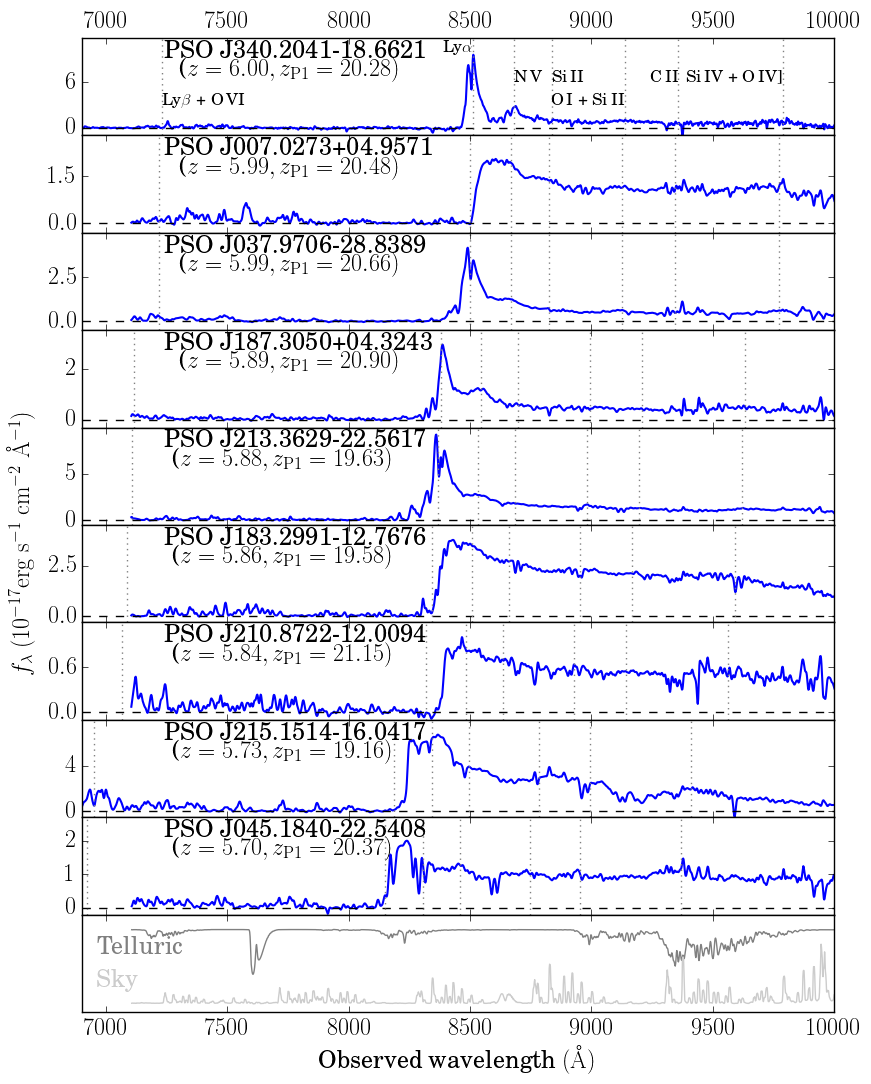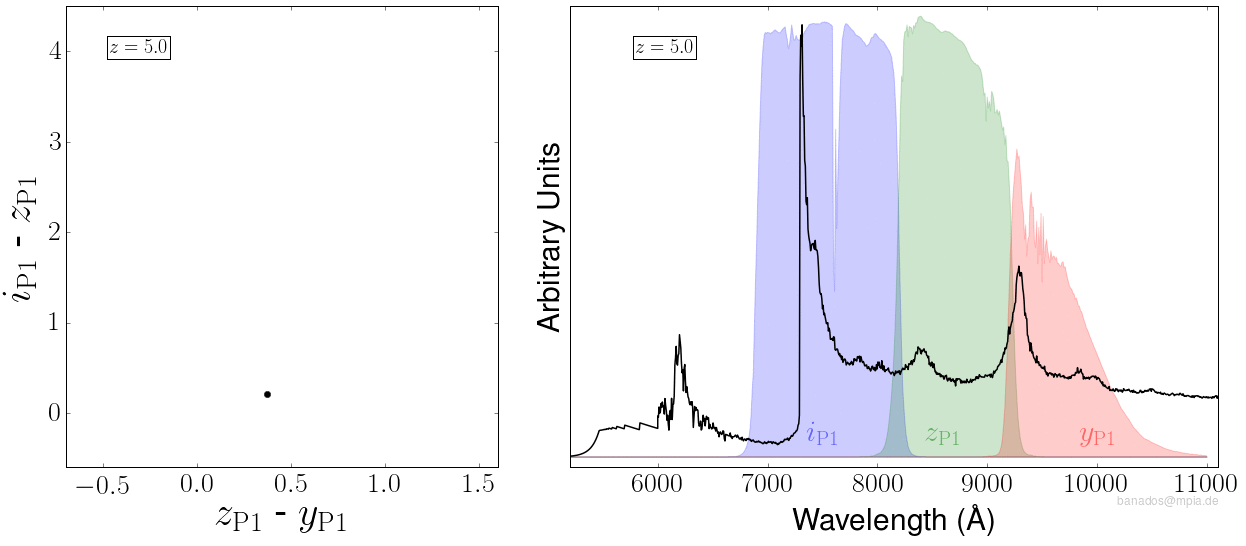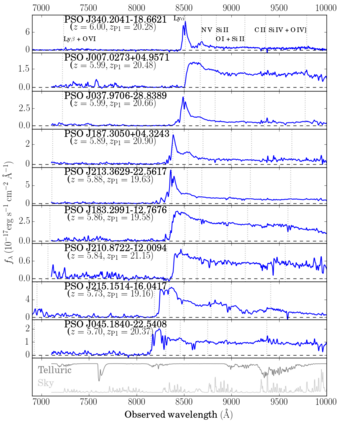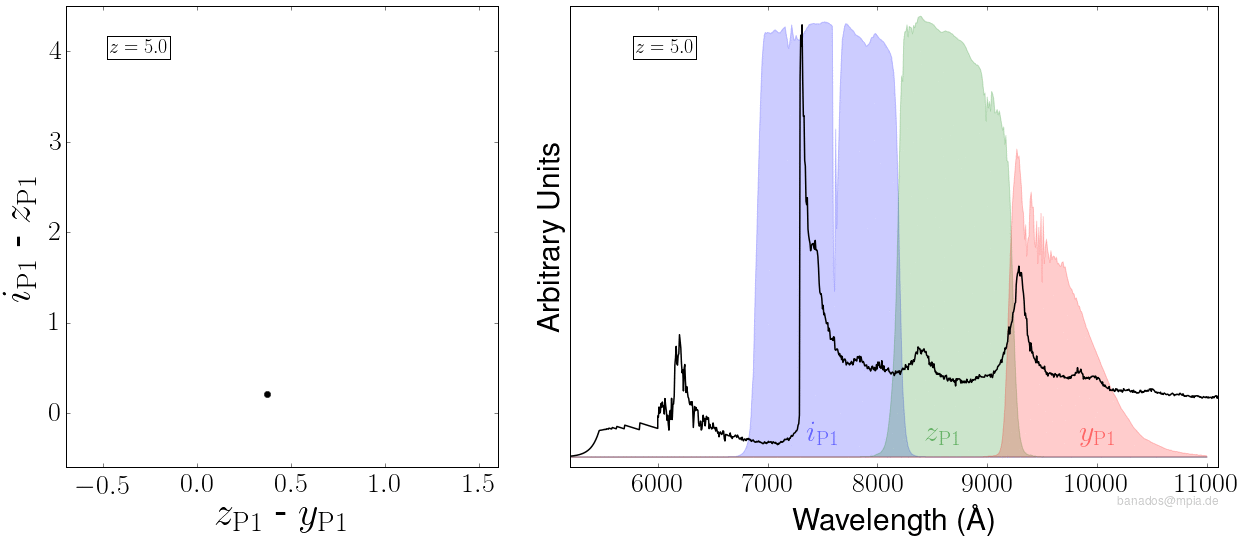
Key Project 10
Active Galactic Nuclei and High Redshift Quasars

A quasar—quasi-stellar object (QSO)—is an extremely luminous object found at such large cosmic distances that it appears point-like in the sky, similar to stars. In reality, quasars are supermassive black holes fed by accretion of matter at the centers of faraway, young galaxies. Today, observations suggest that all major galaxies, including the Milky Way, contain black holes as massive as several billion Suns in their centers, though not all black holes are actively accreting. Accreting supermassive black holes, which power active galactic nuclei (AGNs), can exhibit different characteristics depending on their inclination with respect to the line of sight.
Pan-STARRS1 Key Project 10 is dedicated to the study of AGNs and quasars at large cosmic distances, which translates into studying the early Universe, in particular early structure evolution and black hole formation less than a billion years after the Big Bang. They can further be used to probe the elemental composition (e.g., neutral hydrogen fraction and the evolution of metal abundances) of the early Universe and the end of cosmic reionization. The extensive sky coverage, depth, and filter set of the Pan-STARRS1 survey are critical for the detection of high-redshift quasars and AGNs. Moreover, Pan-STARRS1 provides proper motions, which serve to discriminate between very distant and nearby objects of similar color.
With Key Project 10, researchers hope to answer a number of outstanding scientific questions such as:
- How does a quasar host galaxy evolve with distance and as a function of stellar mass?
- How does the balance between radiative cooling and AGN heating vary with distance, mass, and environment?
- When did the first black holes begin to accrete?
- What are the properties of typical quasars in typical dark-matter halos in the early Universe?

Already several extremely distant quasars have been discovered thanks to the strengths of the Pan-STARRS1 dataset, increasing the number of published high-redshift (z > 5.7) quasars by more than 10%. Of particular interest is the variety of spectral features among these quasars—some have very bright emission lines while other have almost no detectable emission lines.
Further reading:
- Morganson et al (2012) The First High-redshift Quasar from Pan-STARRS.
- Morganson et al (2014) Measuring Quasar Variability with Pan-STARRS1 and SDSS.
- Bañados et al (2014) Discovery of Eight z ~ 6 Quasars From Pan-STARRS1.

